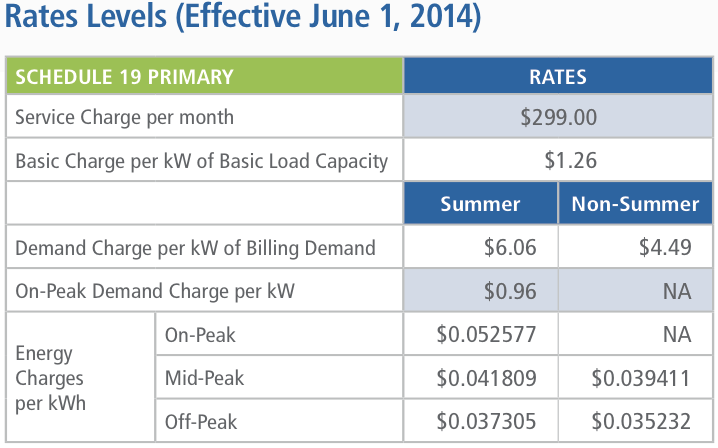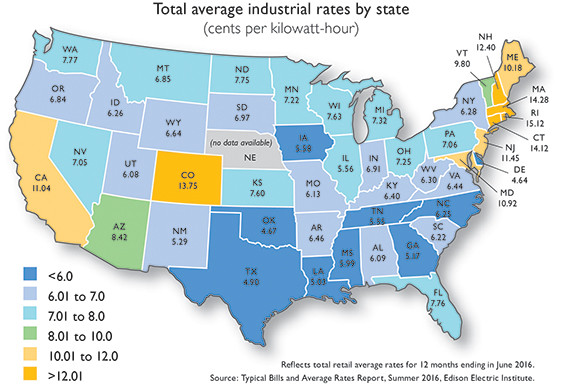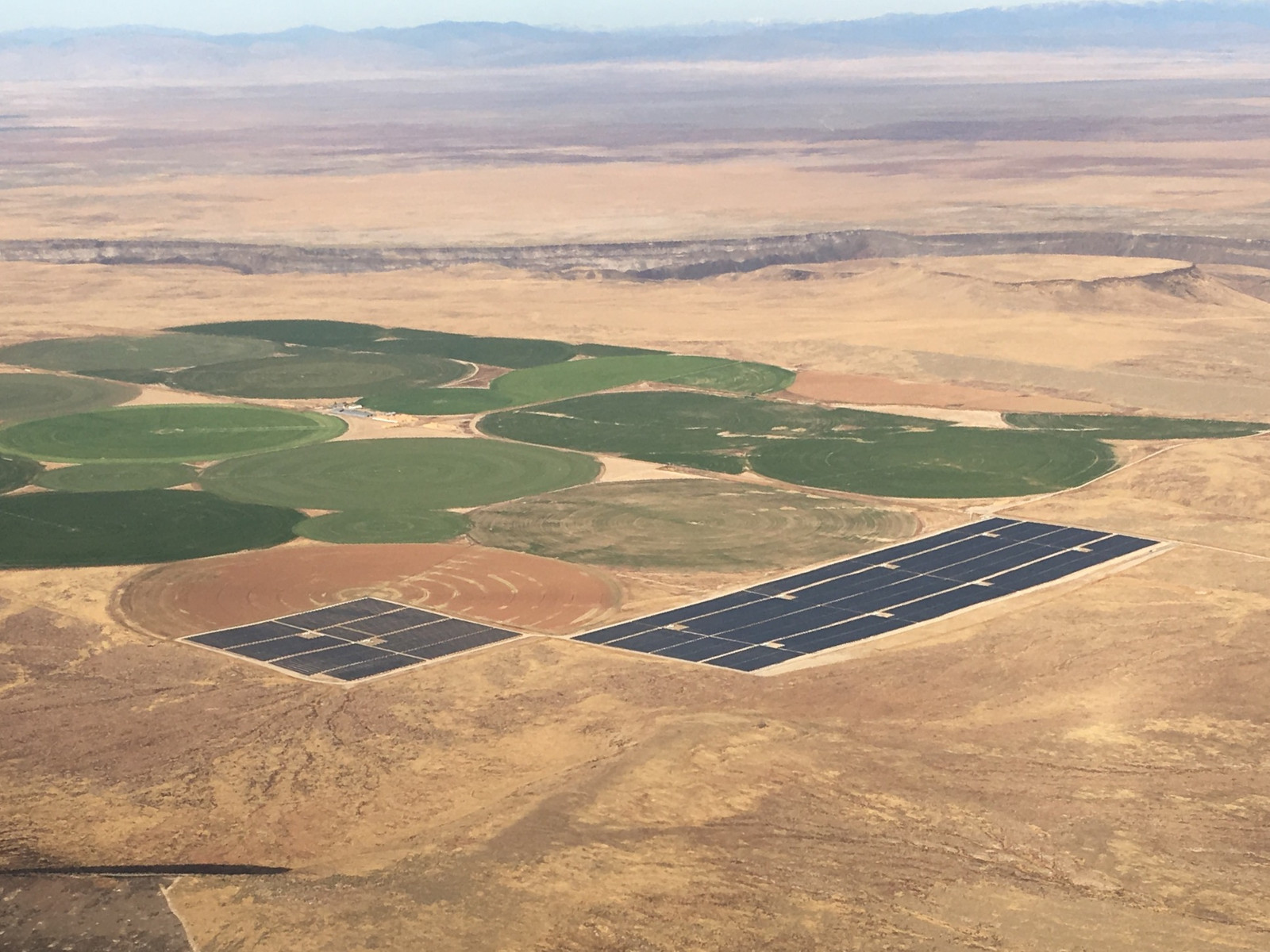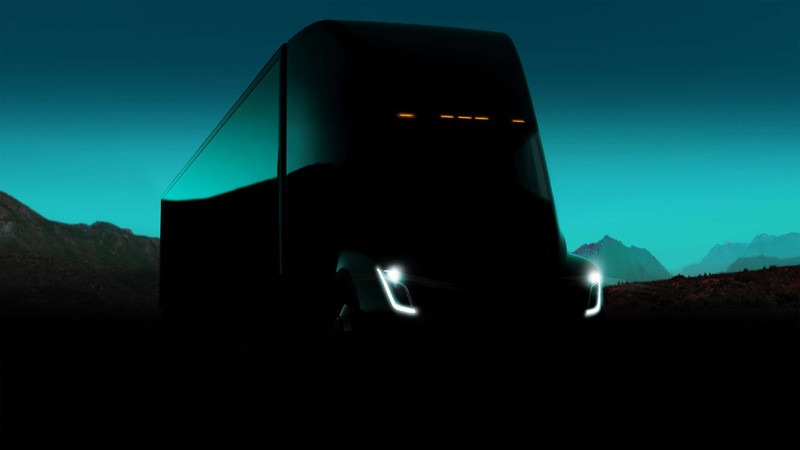At the start of last year, I did some back of the envelope math on electric long haul trucks. And, recently, Tesla announced one. We don’t have exact numbers (“Under 2kWh/mi”), but their numbers are compatible with what I came up with last year (1.43kWh/mi). I expect they’ll come in slightly under that (my money is on 1.3kWh/mi), simply because they don’t have significant cooling drag to deal with, and can improve the aerodynamics slightly over a big diesel on that alone.

What I want to talk about this week, though, are the Megachargers. Which, I assure you, are not the latest enemy for the Power Rangers - or the lastest “Mash all of them together” big robot thing. They’re the devices that will cram 400 miles of range into the trucks - in half an hour. Oh, and for an energy cost of $0.07/kWh. For megawatt class charging. I know my way around power rate schedules, but that’s iffy from grid power. Does it pencil out? If it doesn’t, how can they make it? How feasible is this, really? Keep reading to find out!
First: Some Numbers
If you hate numbers, I’m sorry. This post just isn’t going to be much fun for you. It’s a numbers post, through and through. This falls into the category of “research posts” I wanted to write more of this year.
From Tesla at various points, we have some charging numbers: $0.07/kWh power cost, and “400 miles in 30 minutes.” Presumably, both at the same time.
From my previous work, I’ve got a truck power consumption of 1.43 kWh/mi. However, I didn’t do any work on cooling drag or regen braking (a diesel can slow down without brakes, but it doesn’t recover the energy) so I’m going to use a slightly more optimistic 1.3 kWh/mi average for this analysis. I’m pretty confident the Tesla Semi will come in between 1.2 and 1.4 kWh/mi - significantly less than 2, I’d add.
I’m going to do most of my math playing around with a single bay charger - the numbers get a touch better with more bays, but not enough to make a difference. And I’m not playing with simulating traffic - I just want to know how feasible this sort of charging is, given some actual high power industrial rate schedules.
And, for power company numbers, I’m using Idaho Power’s Schedule 19 (“You want how many megawatts???”) rates under Primary Service. Secondary Service is for a 480V feed (or sub-2000V feed other places), and Primary Service is for higher voltages. I don’t know what voltage you’d want to supply a Megacharger site at, but it’s going to take a lot of power - so I’ll assume Primary Service rates. Why Idaho? We have reasonably cheap power out here (but not the cheapest in the nation), I’m familiar with the rate schedules, and I’d rather run the numbers with something reasonable before I try them with something expensive. You can get slightly cheaper power with Transmission service (power at the main transmission line levels), but I’m going for middle of the road since I don’t think Tesla is going to be building out completely massive charging stations with only a few hundred trucks on the roads initially. You need a lot of megawatts for a transmission voltage tap to make sense.
Here are the rates I’m using.

If you’re not familiar with industrial rate schedules, the names for these various fees probably look like gibberish. But they’re really quite straightforward, and explained nicely in the Schedule 19/Large Power Service extended paperwork.
The Service Charge is what it sounds like - the base rate you pay for being hooked up. This is independent of everything else.
Basic Load Capacity is “the average of the two greatest monthly Billing Demands established during the 12 month period which includes and ends with the current Billing Period, but not less than 1,000 kW.” If you pull a steady power year round, this is the same as your Billing Demand, but it’s paid based on your peak load for the year.
Billing Demand is “the average kW supplied during the 15-consecutive-minute period of maximum use during the Billing Period.” Your peak monthly use. You pay for this, as well as for your energy use - you can think of this as paying directly for the infrastructure, which has to be sized for the maximum power delivered.
The On-Peak Billing Demand is “the average kW supplied during the 15-minute period of maximum use during the Billing Period for the On-Peak time period.” Same as above, but this is only measured during the peak demand period.
And then there are the power rates, per kWh. You may notice that these are very, very low compared to residential rates - and you’d be right. Residential rates combine the power cost and the transmission cost into one fee structure (mostly captured by the increase in power costs as you use a lot of power), and industrial rates separate them out much more explicitly. I wish I could get peak demand rates for home use, but… not really a thing, yet. And I’d need batteries.
Industrial power rates are all about separating out the costs of the power and the cost of the delivery infrastructure. The infrastructure has to support your peak rate - you can’t cram a few megawatts through a residential pipe. And, regardless of how little you use that peak power, the infrastructure still has to be able to deliver it. So you pay for infrastructure based on the peak demand, and you pay barely more than the cost of generation for the actual kWh delivered.
With all that worked out, let’s figure out how much power it takes to charge a Tesla Semi!
Charging Trucks: 400 Miles in 30 Minutes - or 1.1MW
Fortunately, the math gets easier - at least for now. If we want to charge 400 miles worth in 30 minutes, we simply need to know how much energy that takes, and then we know how much power it takes! I’m going to call the lithium cells 100% efficient for this ballpark, and… oh, let’s say 95% efficiency for the “mains power” to “high voltage DC” conversion process. It might be a bit higher or lower, but that should be close enough.
If we use my number from above of 1.3kWh/mi, 400 miles means 520kWh of energy. And, if we want that much energy in half an hour (0.5 hours), we need a power of 1.04MW into the pack. Definitely a “Mega” charger (almost exactly). Toss in the 95% efficient power conversion, and you’re looking at a grid power of 1.095MW (and grid energy of 547kWh) - I’ll call it 1.1MW and 550kWh for the rest of this calculation, but you could equally use 1MW and come up with similar numbers.
This means that each stall is going to draw roughly 1.1MW of power when occupied and charging. How much total energy will this be? It depends on the number of trucks charging - but it also doesn’t really matter. For now, let’s focus on a single truck.
Charging a Single Truck: Direct from Grid
Let’s say you’ve got a station, in the middle of Idaho Power’s territory, operating on Schedule 19. What does it cost to charge a truck, if you bolt it straight into the power grid, and charge at 1.1MW for half an hour (once a month) to get 550kWh of energy into the battery pack?
The base connection for your station is $299. Peak power will be 1.1MW, and I’ll be nice and assume it’s all off peak charging in the winter (cheapest power). Total energy used is 550kWh. You can already see that this isn’t going to work, but I’ll carry it through.
Since the peak use for 15 minutes will be 1.1MW, total demand charges work out to $5.75/kW (Basic Charge + Demand Charge) - or $6325.
And then the cost of the actual energy, at $0.0352/kWh for 550kWh, is $19.36. Not bad, there!
But, the total cost for this once a month charge? $6643.36, or $12.08/kWh. No good. No good at all.
Charging an Endless Stream of Trucks: Direct from Grid
But, industrial rates are custom designed to punish that sort of use - high power, peaky, infrequent (but random), and not good infrastructure utilization. They prefer steady use - so I’ll run the same numbers, but with an endless stream of trucks. This station could service up to 48 trucks a day at half an hour each, or 1488 trucks a month (with a 31 day month). Not quite Iowa 80 truckstop traffic, but still a lot of trucks.

The demand math for this looks exactly the same (1.1MW peak demand), but the energy costs are higher. Averaging out the winter Mid-Peak (16 hours) and Off-Peak (8 hours) energy rate, the average energy cost is $0.038018/kWh.
For 48 trucks a day, 31 days a month, the total energy cost is (550 * 48 * 31 * 0.038) = $31100. Expensive, but still pretty cheap per kWh.
The total cost for this month would be $37724 - only 5.6x more than for a single truck, for nearly 1500x the energy delivered. Industrial rate schedules in action. And, $0.046/kWh! Well less than the stated $0.07!
So, this is starting to look quite feasible - at least with certain rate schedules in the winter. What about summer?
Direct from the Grid: Summer Rates
Summer power is a good bit more expensive than winter power, so I’ll run the math again for the summer rates - this adds an additional peak demand cost, and the power is more expensive. Again, I’ll assume an endless stream of trucks.
With summer rates, there are 8 hours of peak, mid-peak, and off-peak, for an average daily power cost of $0.0435/kWh. Throw in the on-peak demand charge, and you get a monthly cost of $45,000 - or right about $0.055/kWh. Still doable on grid power!
Lower Utilization: 5 and 20 Trucks/Day on Pure Grid Power
The “constant use” scenario above is the absolute best case for industrial power rates - 100% utilization at a flat power use.
If we change it up to something more realistic, let’s see what happens early on if we try to charge 5 or 20 trucks a day on grid power alone (with 1.1MW demand charges). I’m going to use the winter rates here, because they’re a bit better, and I don’t think this is going to look nearly as nice.
For 5 trucks a day, on average winter power rates, monthly cost is $9,863.50, for $0.116/kWh. Hm…
Upping that to 20 trucks a day gets a monthly power cost of $19,582 - $0.057/kWh. That’s doable! You can see how the improved utilization really drops the per-kWh cost.
But what if we add batteries into the mix?
Ballparking Battery Cost
I don’t know exactly what Tesla pays for the batteries they make. I do know that Musk has said in the past that he’s aiming for $100/kWh cell cost by 2020, and I expect they’re below $150/kWh now (I know what I pay for cells, and I’m no Tesla - but that doesn’t mean I don’t have a 2013 Model S cell in my office to play with when I’m bored).

For stationary storage use, I’m going to spitball at $100/kWh, 70% battery stroke (only use the middle 70% of the state of charge for longevity reasons), and 10,000 cycles (pushing it, a lot, but if they’re cycling multiple times a day it’s doable). You’d need some infrastructure surrounding the batteries as well to handle charging/discharging/balancing/thermals, but Tesla has that well understood and, presumably, fairly cheap. At $200/kWh installed cost (for Tesla - remember, they don’t need to make a profit selling themselves hardware), 10k cycles gives you a per-kWh cycled cost of $0.02/kWh. Not bad. They might be able to get it lower, but I don’t have any more concrete numbers, so I’m grabbing some optimistic numbers. Tesla really does “get” lithium batteries, even if they can’t wrap their heads around lead acid.
Battery Based Rates: 5 and 20 Trucks/Day
If we throw batteries into the mix, the peak power drops - significantly. And so do the demand charges. Though I don’t think the demand charges drop enough to justify charging at night only.
A single bay servicing 5 trucks/day has an average power draw of 115kW. This, actually, won’t work with Schedule 19 rates - the minimum demand is 1MW. So, I’ll still do the math, but you’d need a bunch of bays to make this happen within the rate schedule.
With the winter power rate, the monthly cost is $4200, for a per-kWh cost of $0.049 - even with the battery cycle cost added, you’re at $0.07.
For 20 trucks a day, it’s $13,900, and a per-kWh cost of $0.041 - so still less than $0.07 with batteries.
Comparing against the grid-only rates, batteries definitely make sense early on, though as the utilization increases, they matter a bit less.
Initial Conclusions
Based on at least my local industrial power rates, I don’t see any reason to see $0.07/kWh as a problem - at least in areas with cheap power. Tesla isn’t going to make much money on it, and the charging stations out here will take a long while to pay off, but Tesla seems pretty happy to invest in the infrastructure that allows them to sell EVs. They have to site the stations reasonably for the type of truck traffic they expect, but a 500 mile range (I expect the cross country trucks to all be 500 mile versions) gives them a lot of flexibility with regards to where they put stations.
The capital costs likely come out of the truck costs, but I don’t see the per-truck cost as being particularly high, at least as long as they sell a bunch of trucks.
Power Costs Around the United States
I fully expect that people will respond with, “Well, yes, you proved it’s possible in Idaho, but what about places with radically more expensive power?” And my response will be, “Sure, but what about places with cheaper power?”
I’m not going to sit down and run power simulations for every utility in the United States (though I expect Tesla did assign some interns to do this and has good data for every power company servicing highways). But, the US Energy Information Administration (https://www.eia.gov) has a handy chart: Average Price of Electricity to Ultimate Customers by End-Use Sector. Idaho power industrial rates come in around $0.07/kWh delivered (this doesn’t surprise me, since most uses are going to be peakier and pay more in demand charges), and that’s pretty much in the middle of the national rates. California is more expensive, New England area is more expensive, but overall? I see no reason to believe Tesla is off their rocker when it comes to power cost. I think they can make it work - even on pure grid power.
Pacific Power has an Industrial Price Comparison chart with numbers from 2016, and they come out about the same as the above numbers - there are an awful lot of states where you can get grid power cheaply enough for this to work.

Tesla, though? I don’t think they plan to run on pure grid power.
Solar, Wind, and Grid Services
Tesla being, well, run by Elon Musk, I fully expect them to make use of solar and wind power for a lot of their charging stations. You’d need a bunch of battery to make this work reasonably, but they’re already going to have a bunch of battery for load leveling. Adding solar or wind into the mix just means they need a bit more battery.
But, here’s the thing: If you already need the batteries to store power, solar and wind can be seriously cheap power. $0.02-$0.04/kWh cheap (normally seen as $20/MWh for utility size installs). The picture below is a local 20MW install in the $0.03/kWh price range - there’s not much else out that way, but it’s near some high voltage transmission lines (you don’t want to know how much power the well pumps for those irrigation sprayers take).

I’ve seen some numbers looking at putting solar panels right next to the highway for a charging station, and, unsurprisingly, they don’t look good. That land is expensive! You don’t put a solar farm right by the highway - you put it some number of miles away, in cheap land, and you run high voltage transmission lines. Or you use the existing transmission lines.
I expect Tesla can get some very nice deals from power companies, simply because with a large solar farm plus a large battery bank, they can offer some quite nice grid services in the bargain. A Tesla solar + battery + Megacharger is going to be able to offer guaranteed ramp up/ramp down rates (if a cloud comes over, the batteries make up the difference so they can keep putting power on the grid for a while), it’s going to be able to offer effective frequency and voltage stability services (this relies on rapid response, which batteries can do), and they can buy up cheap overnight power when there’s a wind surplus, charging rapidly. This is a pretty good deal for any utility company, and it’s a much, much easier system to integrate into the power grid than than residential rooftop solar, which offers content free VARs (power with no stability services) with very rapid ramp rates.
No, They Won’t be Off Grid Chargers
And, just to address one other point: There is no chance the semi chargers will be fully off grid. It makes no sense at all to do this. You can get crappy winter inversions (current conditions where I live: Calm, with basically no sun - my 2280W main array is producing 138W at nearly solar noon) that mean you can’t charge, you get smoke coverage and hot panels in the summer throughout large parts of the country, and during the spring/fall, you can get such amazing production (cold panels, clear skies) that you can’t make use of all the power locally - it makes sense to sell it back to the grid.
The car Superchargers can get away with radically reduced charging rates for end users on occasion (one person grumbling about 35kW, another complaining about 60kW, and if you have Tesla owning friends most will make awkward noises when you ask about their Supercharger experience), but that’s just not acceptable for commercial truck traffic with drivers having hard daily hour limits. The Megachargers are going to have to reliably put out rated power for this to be useful, and that means the power grid (plus batteries - some of the limited Supercharging is grid limit based).
Plus, as I mentioned above, they can sell excess power into the grid if they’re hooked up.
Charger Colocation
Reviewing the numbers above, you may notice that it only makes sense if there are a lot of trucks going through. Early on, there won’t be (even on dedicated routes, there simply won’t be that much traffic). But… You know those Model 3s? The ones that are supposed to be produced in massive volumes sometime soon? The current Supercharger infrastructure can’t handle that sort of influx. It’s almost as if Tesla will need a bunch of new charging stations and infrastructure to handle that.
I fully expect the Semi charging stations to be colocated with the normal car Superchargers, at least to the extent that they can share infrastructure and battery. The cars will create enough demand that the stations aren’t obscenely expensive to run, and as the trucks pick up, the battery can buffer the demand into the trucks, and the station peak power can increase gradually (or, not, if the solar farms are built out). This sort of combined station makes a ton of sense - either way, you can feed cheap power into cars (and I expect the Model 3 charging costs will be a good bit higher than $0.07/kWh - which will help subsidize the stations while they’re ramping up).
Side Perks: Effective Use of Industrial Power Rates
All that said, there’s another thing that’s important to note about the electric semi charging. For a typical warehouse that is mostly shut down at night, charging trucks at night is almost free. They’re already paying the demand charges, so adding some power use at night (that doesn’t spike their demand charges up higher) means they’re only paying the per-kWh cost - and they don’t need megawatt class chargers, because you can take 8 hours to top off.
To recharge 400 miles of driving overnight (8 hours), the charge rate required is a mere 65-70kW. And, even if it does increase the demand charges somewhat, it’s still the lower off-peak charges. A tank of diesel at 8mpg (high for city delivery work) would run around $150, a tank of electrons within the existing demand charges would run less than $20. I expect this is how the bulk of trucks will charge - at warehouses, overnight. Yes, it may require some changes in running the business, but the cost savings will make it worth it. Or, if the warehouses have solar, the trucks can charge during the day for free. There are plenty of ways to make this look good on the finance sheets.
Final Thoughts: This Seems Entirely Feasible
I’ve avoided going into the capital costs of this setup, partly because I don’t have the experience to really drill into those, but mostly because, if Tesla sells enough trucks (and if they can produce them and they’re as reliable as promised, I think they will), the charging station capital costs don’t matter that much. They can do grid based charging in large parts of the country while making a bit of money, and that will cover loses on the coasts with expensive power. By leveling the power costs with batteries, the actual grid costs are quite reasonable and below the promised price, and they can make money on the other side by offering some grid services to power companies that are interested. The trucks have enough range that Tesla can locate the stations where they’ve got cheap power, and cheap land for solar. It all checks out.
And, finally, just to share a bit about how I did my math on this - there are projects where paper, pencil, and an old calculator work well. This is definitely one of those projects. I do like my TI-83, though this one isn’t even overclocked…

Hopefully this post gives you a bit of understanding as to how industrial power rates interact with high power truck charging. I’ve seen plenty of hype, a few places saying it’s feasible, a few saying it’s absurd, but nothing beats running your own numbers and coming up with your own conclusions on something like this.
If you see any glaring errors or omissions, please, let me know in the comment section. And, with that, I’ll see you next week!
Comments
Comments are handled on my Discourse forum - you'll need to create an account there to post comments.If you've found this post useful, insightful, or informative, why not support me on Ko-fi? And if you'd like to be notified of new posts (I post every two weeks), you can follow my blog via email! Of course, if you like RSS, I support that too.








